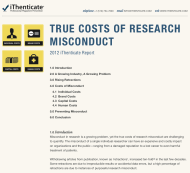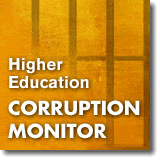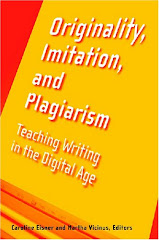Michael 2007;4:53–56
The title of this conference is «Research misconduct: learning the lessons». However, the organizers seem to be somewhat confused, because the title of this last session today is: «Will anything really change?» If you really have learnt your lessons, then things will change. However, as we all know, that is not always the case. A familiar example is the fact that although we know a lot of things in medical practice, it is often a huge step from knowledge to implementation.
I will skip to the conclusion right away: Will anything really change? My answer is: No. I will try to explain why this is the most likely answer, as seen from an editor’s point of view.
Two examples–no consequences
In 2005, a paper in The Journal of the Norwegian Medical Association was retracted (1). I was the medical editor for that manuscript, and I remember I was thinking that this was a pretty good paper. A few months later, I realized why. The paper had been plagiarized from another paper published two years earlier in The Lancet. This was the first retraction in the 125-year history of The Journal of the Norwegian Medical Association (2). As a matter of standard procedure, The Editor-in-Chief informed all the authors’ employers. However, to our surprise, almost nothing happened.
In the autumn of 2006, Iain Chalmers presented us with another case of scientific misconduct: the case of the Croatian professor Asim Kurjak (3). Kurjak had plagiarized on at least two occasions – but with almost no personal consequences. There seems to be a pattern here, and Chalmers put it accurately: unless perpetrators face greater sanctions, the problem is unlikely to go away. But what about Jon Sudbø? He has really experienced serious sanctions. True, but why? To me, the reason is obvious: it was not possible to get away with fraud. When he admitted to having fabricated data in The Lancet paper, the international research community looked – for a while – to Norway, and his employers had to do something in order to retain this country’s credibility in the international research community (4).
Reasons why things won’t change
There are many examples like the two cases I have briefly described. The point should be clear: the crux of the matter for the perpetrators and their employers is: is it possible to get away with it? And as long as the answer more often than not is «Yes», then why should anything really change?
The second reason why nothing will change is that research is based on trust. There is no alternative; and in relationships based on confidence, you always run the risk that someone will cheat you.
Moreover, misconduct may be difficult to detect. Jon Sudbø was caught because his fraud finally became obvious. His paper in The Lancet was reckless. If he had been more careful, I guess that today he would still be a star in the scientific community.
Finally, the counter forces are strong; and they are all pervasive. For example: publish or perish: in order to survive in the scientific community today, you have to publish – extensively. It is then of course tempting to take short cuts to achieve this. Moreover, the perpetrators often deny what they have done. Neither Kurjak nor Sudbø has admitted (nor possibly even regretted) what they have done. These are only examples of what I mean when talking about counter forces.
Let’s go on as before
In my opinion, the main reason why nothing will change is that fraud is unpleasant. I have two images of this: no one likes to be cheated. We all know that. Moreover, when someone is caught with their trousers down, it is unpleasant not only for the owner of the trousers, but also for others around them. The plagiarism in the Norwegian journal that I mentioned earlier is an example: it was obviously unpleasant for the authors, or more precisely, for those who pretended to be the authors – and it was also unpleasant for us at the journal – and everyone else. So why bother?
The obvious conclusion is: let’s go on as if nothing has happened: that is to the benefit of all of us. I’m sorry to bring you this unfortunate conclusion.
Final remark
Despite all my pessimism – or maybe it is realism? – I will point to some ways out of this mess, again primarily from an editor’s point of view. The problem would be solved if researchers became honest; that is, if they became better human beings. That is not very likely, is it? We have a few thousand years of observation of mankind now, and there are not too many signs of progress.
The journal’s role is important but limited. In the past, editors would simply reject papers that were suspected of being fraudulent. Now, the Committee of Publication Ethics clearly states that editors have an obligation not to ignore suspicions of fraud. Journals are important whistle-blowers, because they, their reviewers, or readers are often the first to suspect research misconduct (5). However, at what time does one blow the whistle? How much evidence is necessary?
Investigating cases of suspected fraud may be very demanding on resources and time consuming. An illustrative case was presented in the BMJ in 2005 (6). After a publication of a paper in the BMJ in 1992, Dr Ram B. Singh became the focus of an investigation into suspicion of scientific misconduct, spanning well over a decade.
The journals have a duty to notify their readers if a paper proves to be fraudulent. However, usually it must depend on others – that is, a legitimate authority such as an employer, university, or funding body – to hold an investigation and reach a conclusion on the status of the work. However, what should be done when there is no authority, or when the authority doesn’t see it as its task to investigate or doesn’t even want to investigate?
The largest responsibility has to be put on the institutions. When they are informed about the suspected fraud, then they have to respond. They have to investigate. And they have to reach a conclusion.
References
1.Midgard R, Seland JH, Hovdal H et al. Optic neuritis – diagnosis, treatment and follow up [in Norwegian]. Tidsskr Nor Lægeforen 2005; 125: 425–8. Retraction in: Midgard R, Seland JH, Hovdal H et al. Tidsskr Nor Lægeforen 2005; 125: 2056. www.tidsskriftet.no/pls/lts/PA_LT.VisSeksjon?vp_SEKS_ID=1145673 (19.1.2007).
2.Haug C. Writing yourself or copying – is it really new? [in Norwegian]. Tidsskr Nor Lægeforen 2005; 125: 1985. www.tidsskriftet.no/pls/lts/PA_LT.VisSeksjon?vp_SEKS_ID=1228854 (19.1.2007).
3.Chalmers I. Role of systematic reviews in detecting plagiarism: case of Asim Kurjak. BMJ 2006; 333: 594–6. bmj.bmjjournals.com/cgi/content/full/333/7568/594 (19.1.2007).
4.Hem E. Swindle and success [in Norwegian]. Tidsskr Nor Lægeforen 2006; 126: 2931. www.tidsskriftet.no/pls/lts/PA_LT.VisSeksjon?vp_SEKS_ID=1452325 (19.1.2007).
5.Smith R. Investigating the previous studies of a fraudulent author. BMJ 2005; 331:288–91. www.bmj.com/cgi/content/full/331/7511/288 (19.1.2007).
6.White C. Suspected research fraud: difficulties of getting at the truth. BMJ 2005; 331:281–8. www.bmj.com/cgi/content/full/331/7511/281 (19.1.2007).
Erlend Hem
Medical editor
The Journal of the Norwegian Medical Association
PO Box 1152 Sentrum
N-0101 Oslo
Norway








No comments:
Post a Comment